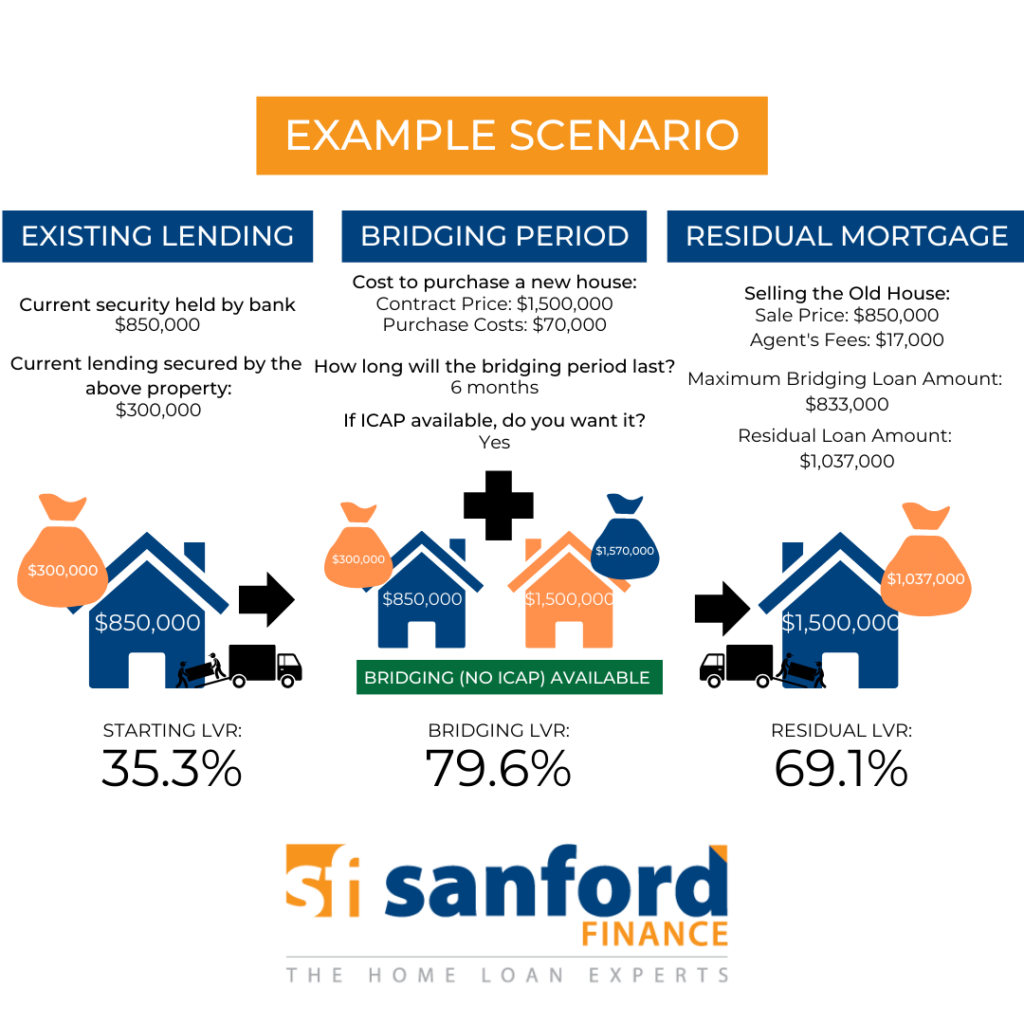
Oct 4, 2022 | Insurance
We’ve teamed up with our friends at Windmill Financial Planning for these articles to help make sure your finances are secure both now and in the future.
Many of our best laid plans rarely follow through exactly as we might have hoped. However, it’s
another story when it comes to planning for what happens after we’ve left this planet. Our ideas
about who will benefit from our estate could potentially change often during our lifetime.
Estate planning ensures that when we die, our assets can be passed promptly and tax-effectively to
the people we love or to the charities we support.
Mandy had brought up three children on a tight budget since divorcing their father. She arranged
her finances well and took out insurance to ensure her children would be supported if she died or could not work. Mandy’s will appointed her sister, Penny, as guardian of her children and executor
of her estate.
Unfortunately, Penny became seriously ill and Mandy agreed to look after Penny’s son Alex, as well
as her own family. When Penny unexpectedly died Alex was left some money from her estate. When
Mandy was revising her financial plans to cope with these events, her financial adviser
recommended she apply to become Alex’ guardian, increase her insurance cover, appoint a new
guardian for the children and include Alex in her will.
These are common scenarios, so if your family situation or ideas change, be sure to ask for
professional guidance in updating your estate plan accordingly.
A few years later, Trevor passed away after a brief illness and Jennifer followed shortly afterwards.
By this time, Trevor’s brother was in a nursing home suffering dementia and therefore could not
fulfil the trustee’s obligations. The family had to approach the courts to appoint a replacement
which meant the trust might not have been administered in the way Trevor and Jennifer had earlier
wished.
Who supports Alex?
Mandy had brought up three children on a tight budget since divorcing their father. She arranged
her finances well and took out insurance to ensure her children would be supported if she died or could not work. Mandy’s will appointed her sister, Penny, as guardian of her children and executor
of her estate.
Unfortunately, Penny became seriously ill and Mandy agreed to look after Penny’s son Alex, as well
as her own family. When Penny unexpectedly died Alex was left some money from her estate. When
Mandy was revising her financial plans to cope with these events, her financial adviser
recommended she apply to become Alex’ guardian, increase her insurance cover, appoint a new
guardian for the children and include Alex in her will.
These are common scenarios, so if your family situation or ideas change, be sure to ask for
professional guidance in updating your estate plan accordingly.
[/et_pb_text][/et_pb_column][/et_pb_row][/et_pb_section]
Trevor and Jennifer had planned their retirement meticulously including an estate plan. Their wills
provided for a testamentary trust to be set up when they died. Trevor’s older brother agreed to be
the trustee because he knew their family and understood what Trevor and Jennifer wanted. Their
intention was that the trust would support their grandchildren through their education and
establishment of their lives.
A few years later, Trevor passed away after a brief illness and Jennifer followed shortly afterwards.
By this time, Trevor’s brother was in a nursing home suffering dementia and therefore could not
fulfil the trustee’s obligations. The family had to approach the courts to appoint a replacement
which meant the trust might not have been administered in the way Trevor and Jennifer had earlier
wished.
Who supports Alex?
Mandy had brought up three children on a tight budget since divorcing their father. She arranged
her finances well and took out insurance to ensure her children would be supported if she died or could not work. Mandy’s will appointed her sister, Penny, as guardian of her children and executor
of her estate.
Unfortunately, Penny became seriously ill and Mandy agreed to look after Penny’s son Alex, as well
as her own family. When Penny unexpectedly died Alex was left some money from her estate. When
Mandy was revising her financial plans to cope with these events, her financial adviser
recommended she apply to become Alex’ guardian, increase her insurance cover, appoint a new
guardian for the children and include Alex in her will.
These are common scenarios, so if your family situation or ideas change, be sure to ask for
professional guidance in updating your estate plan accordingly.
[/et_pb_text][/et_pb_column][/et_pb_row][/et_pb_section]
That never happened because he was killed in a car accident driving home from the office. Joel and
Jane were still married and as they had owned their house as joint tenants, it passed automatically
to her. The trustees of Joel’s super fund split his super between Sophie and Jane. Sophie was left to
raise their child on her own without the financial support Joel would have wanted.
Who controls the money?
Trevor and Jennifer had planned their retirement meticulously including an estate plan. Their wills
provided for a testamentary trust to be set up when they died. Trevor’s older brother agreed to be
the trustee because he knew their family and understood what Trevor and Jennifer wanted. Their
intention was that the trust would support their grandchildren through their education and
establishment of their lives.
A few years later, Trevor passed away after a brief illness and Jennifer followed shortly afterwards.
By this time, Trevor’s brother was in a nursing home suffering dementia and therefore could not
fulfil the trustee’s obligations. The family had to approach the courts to appoint a replacement
which meant the trust might not have been administered in the way Trevor and Jennifer had earlier
wished.
Who supports Alex?
Mandy had brought up three children on a tight budget since divorcing their father. She arranged
her finances well and took out insurance to ensure her children would be supported if she died or could not work. Mandy’s will appointed her sister, Penny, as guardian of her children and executor
of her estate.
Unfortunately, Penny became seriously ill and Mandy agreed to look after Penny’s son Alex, as well
as her own family. When Penny unexpectedly died Alex was left some money from her estate. When
Mandy was revising her financial plans to cope with these events, her financial adviser
recommended she apply to become Alex’ guardian, increase her insurance cover, appoint a new
guardian for the children and include Alex in her will.
These are common scenarios, so if your family situation or ideas change, be sure to ask for
professional guidance in updating your estate plan accordingly.
[/et_pb_text][/et_pb_column][/et_pb_row][/et_pb_section]
Joel was a young executive married to Jane, a corporate lawyer. They were both busy and successful
in their careers and had no children. They drifted apart and Joel started a new relationship with
Sophie. They rented an apartment together and six months later were delighted to discover Sophie
was expecting their first child. Joel was finalising an important deal and would “get around to
arranging things” as soon as the ink had dried on the contract.
That never happened because he was killed in a car accident driving home from the office. Joel and
Jane were still married and as they had owned their house as joint tenants, it passed automatically
to her. The trustees of Joel’s super fund split his super between Sophie and Jane. Sophie was left to
raise their child on her own without the financial support Joel would have wanted.
Who controls the money?
Trevor and Jennifer had planned their retirement meticulously including an estate plan. Their wills
provided for a testamentary trust to be set up when they died. Trevor’s older brother agreed to be
the trustee because he knew their family and understood what Trevor and Jennifer wanted. Their
intention was that the trust would support their grandchildren through their education and
establishment of their lives.
A few years later, Trevor passed away after a brief illness and Jennifer followed shortly afterwards.
By this time, Trevor’s brother was in a nursing home suffering dementia and therefore could not
fulfil the trustee’s obligations. The family had to approach the courts to appoint a replacement
which meant the trust might not have been administered in the way Trevor and Jennifer had earlier
wished.
Who supports Alex?
Mandy had brought up three children on a tight budget since divorcing their father. She arranged
her finances well and took out insurance to ensure her children would be supported if she died or could not work. Mandy’s will appointed her sister, Penny, as guardian of her children and executor
of her estate.
Unfortunately, Penny became seriously ill and Mandy agreed to look after Penny’s son Alex, as well
as her own family. When Penny unexpectedly died Alex was left some money from her estate. When
Mandy was revising her financial plans to cope with these events, her financial adviser
recommended she apply to become Alex’ guardian, increase her insurance cover, appoint a new
guardian for the children and include Alex in her will.
These are common scenarios, so if your family situation or ideas change, be sure to ask for
professional guidance in updating your estate plan accordingly.
[/et_pb_text][/et_pb_column][/et_pb_row][/et_pb_section]
Here are some examples of when a life changed and the estate plan did not keep up.
Who gets the house?
Joel was a young executive married to Jane, a corporate lawyer. They were both busy and successful
in their careers and had no children. They drifted apart and Joel started a new relationship with
Sophie. They rented an apartment together and six months later were delighted to discover Sophie
was expecting their first child. Joel was finalising an important deal and would “get around to
arranging things” as soon as the ink had dried on the contract.
That never happened because he was killed in a car accident driving home from the office. Joel and
Jane were still married and as they had owned their house as joint tenants, it passed automatically
to her. The trustees of Joel’s super fund split his super between Sophie and Jane. Sophie was left to
raise their child on her own without the financial support Joel would have wanted.
Who controls the money?
Trevor and Jennifer had planned their retirement meticulously including an estate plan. Their wills
provided for a testamentary trust to be set up when they died. Trevor’s older brother agreed to be
the trustee because he knew their family and understood what Trevor and Jennifer wanted. Their
intention was that the trust would support their grandchildren through their education and
establishment of their lives.
A few years later, Trevor passed away after a brief illness and Jennifer followed shortly afterwards.
By this time, Trevor’s brother was in a nursing home suffering dementia and therefore could not
fulfil the trustee’s obligations. The family had to approach the courts to appoint a replacement
which meant the trust might not have been administered in the way Trevor and Jennifer had earlier
wished.
Who supports Alex?
Mandy had brought up three children on a tight budget since divorcing their father. She arranged
her finances well and took out insurance to ensure her children would be supported if she died or could not work. Mandy’s will appointed her sister, Penny, as guardian of her children and executor
of her estate.
Unfortunately, Penny became seriously ill and Mandy agreed to look after Penny’s son Alex, as well
as her own family. When Penny unexpectedly died Alex was left some money from her estate. When
Mandy was revising her financial plans to cope with these events, her financial adviser
recommended she apply to become Alex’ guardian, increase her insurance cover, appoint a new
guardian for the children and include Alex in her will.
These are common scenarios, so if your family situation or ideas change, be sure to ask for
professional guidance in updating your estate plan accordingly.
[/et_pb_text][/et_pb_column][/et_pb_row][/et_pb_section]
Here are some examples of when a life changed and the estate plan did not keep up.
Who gets the house?
Joel was a young executive married to Jane, a corporate lawyer. They were both busy and successful
in their careers and had no children. They drifted apart and Joel started a new relationship with
Sophie. They rented an apartment together and six months later were delighted to discover Sophie
was expecting their first child. Joel was finalising an important deal and would “get around to
arranging things” as soon as the ink had dried on the contract.
That never happened because he was killed in a car accident driving home from the office. Joel and
Jane were still married and as they had owned their house as joint tenants, it passed automatically
to her. The trustees of Joel’s super fund split his super between Sophie and Jane. Sophie was left to
raise their child on her own without the financial support Joel would have wanted.
Who controls the money?
Trevor and Jennifer had planned their retirement meticulously including an estate plan. Their wills
provided for a testamentary trust to be set up when they died. Trevor’s older brother agreed to be
the trustee because he knew their family and understood what Trevor and Jennifer wanted. Their
intention was that the trust would support their grandchildren through their education and
establishment of their lives.
A few years later, Trevor passed away after a brief illness and Jennifer followed shortly afterwards.
By this time, Trevor’s brother was in a nursing home suffering dementia and therefore could not
fulfil the trustee’s obligations. The family had to approach the courts to appoint a replacement
which meant the trust might not have been administered in the way Trevor and Jennifer had earlier
wished.
Who supports Alex?
Mandy had brought up three children on a tight budget since divorcing their father. She arranged
her finances well and took out insurance to ensure her children would be supported if she died or could not work. Mandy’s will appointed her sister, Penny, as guardian of her children and executor
of her estate.
Unfortunately, Penny became seriously ill and Mandy agreed to look after Penny’s son Alex, as well
as her own family. When Penny unexpectedly died Alex was left some money from her estate. When
Mandy was revising her financial plans to cope with these events, her financial adviser
recommended she apply to become Alex’ guardian, increase her insurance cover, appoint a new
guardian for the children and include Alex in her will.
These are common scenarios, so if your family situation or ideas change, be sure to ask for
professional guidance in updating your estate plan accordingly.
[/et_pb_text][/et_pb_column][/et_pb_row][/et_pb_section]
Just like life, an estate plan is not static. As life changes, a will should be adjusted to ensure it
remains relevant. There are many events that can trigger a need to review an estate plan, for
instance:
- Marriage – which revokes the wills made by the spouses when single;
- Divorce – which revokes any gifts made under a will to the ex-spouse;
- Changes in the family such as births and deaths;
- Changes in relationships such as children entering or leaving de-facto arrangements;
- Death of a person who plays a key part in the estate plan such as an executor or trustee.
Here are some examples of when a life changed and the estate plan did not keep up.
Who gets the house?
Joel was a young executive married to Jane, a corporate lawyer. They were both busy and successful
in their careers and had no children. They drifted apart and Joel started a new relationship with
Sophie. They rented an apartment together and six months later were delighted to discover Sophie
was expecting their first child. Joel was finalising an important deal and would “get around to
arranging things” as soon as the ink had dried on the contract.
That never happened because he was killed in a car accident driving home from the office. Joel and
Jane were still married and as they had owned their house as joint tenants, it passed automatically
to her. The trustees of Joel’s super fund split his super between Sophie and Jane. Sophie was left to
raise their child on her own without the financial support Joel would have wanted.
Who controls the money?
Trevor and Jennifer had planned their retirement meticulously including an estate plan. Their wills
provided for a testamentary trust to be set up when they died. Trevor’s older brother agreed to be
the trustee because he knew their family and understood what Trevor and Jennifer wanted. Their
intention was that the trust would support their grandchildren through their education and
establishment of their lives.
A few years later, Trevor passed away after a brief illness and Jennifer followed shortly afterwards.
By this time, Trevor’s brother was in a nursing home suffering dementia and therefore could not
fulfil the trustee’s obligations. The family had to approach the courts to appoint a replacement
which meant the trust might not have been administered in the way Trevor and Jennifer had earlier
wished.
Who supports Alex?
Mandy had brought up three children on a tight budget since divorcing their father. She arranged
her finances well and took out insurance to ensure her children would be supported if she died or could not work. Mandy’s will appointed her sister, Penny, as guardian of her children and executor
of her estate.
Unfortunately, Penny became seriously ill and Mandy agreed to look after Penny’s son Alex, as well
as her own family. When Penny unexpectedly died Alex was left some money from her estate. When
Mandy was revising her financial plans to cope with these events, her financial adviser
recommended she apply to become Alex’ guardian, increase her insurance cover, appoint a new
guardian for the children and include Alex in her will.
These are common scenarios, so if your family situation or ideas change, be sure to ask for
professional guidance in updating your estate plan accordingly.
[/et_pb_text][/et_pb_column][/et_pb_row][/et_pb_section]






